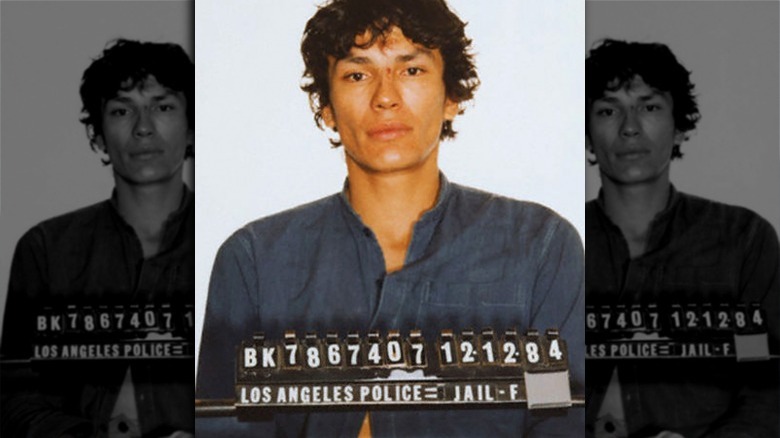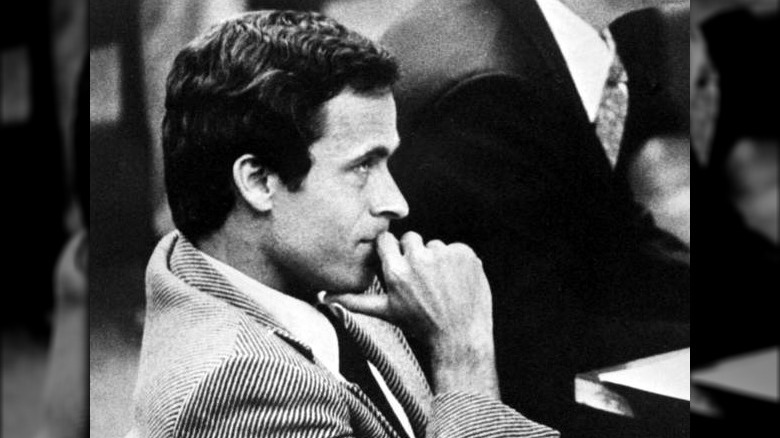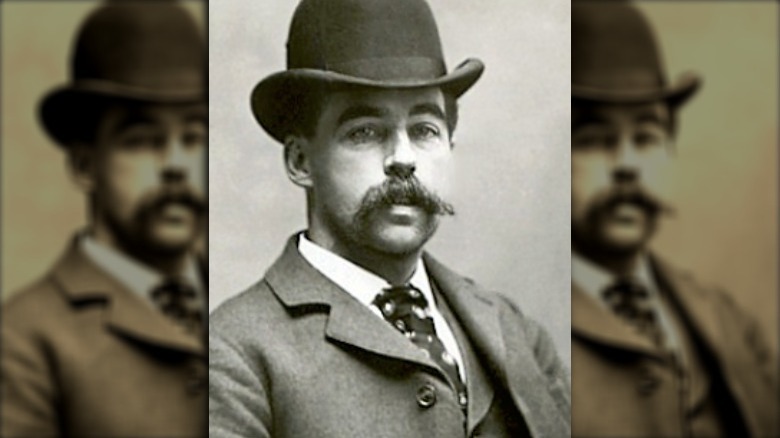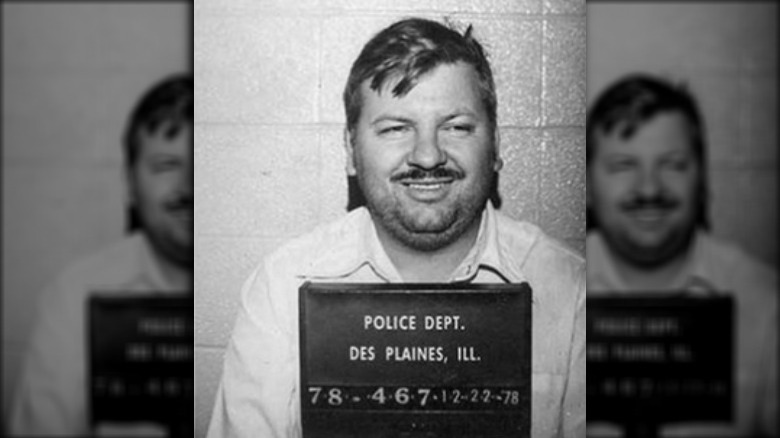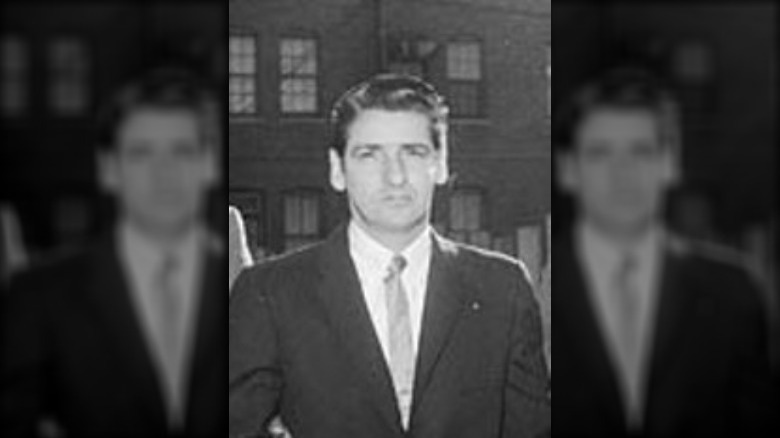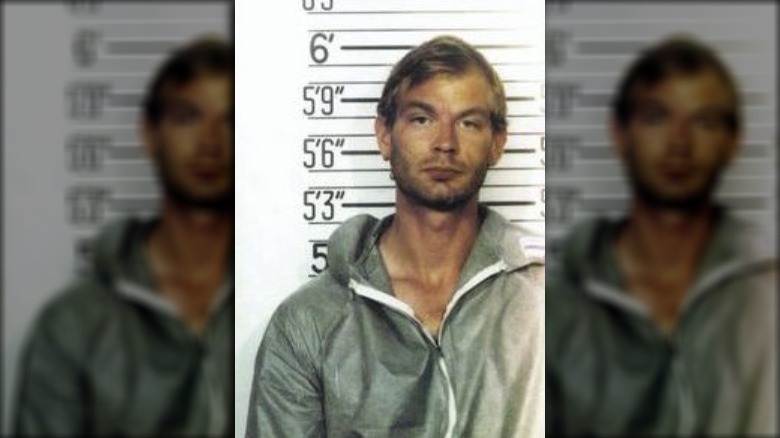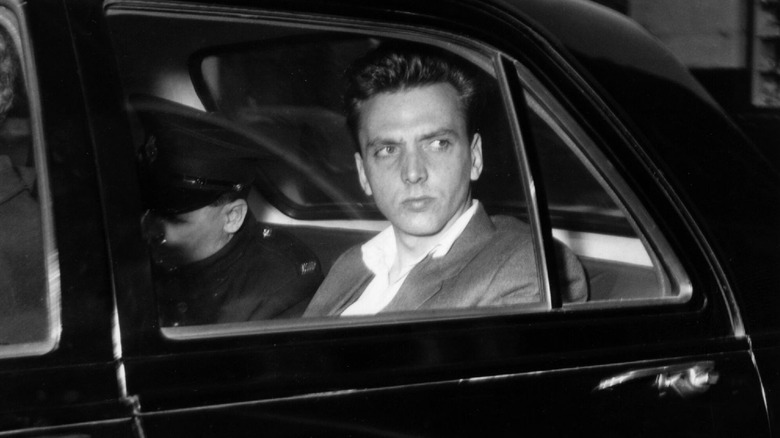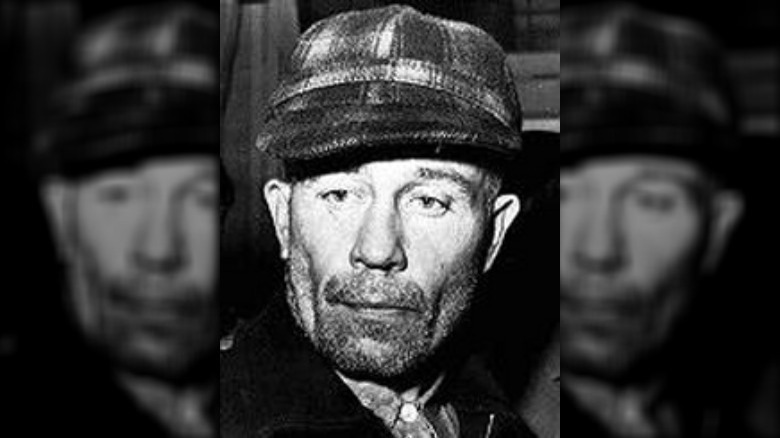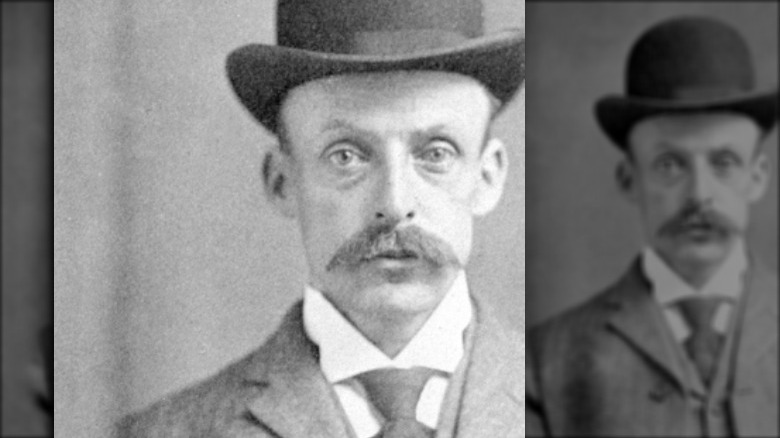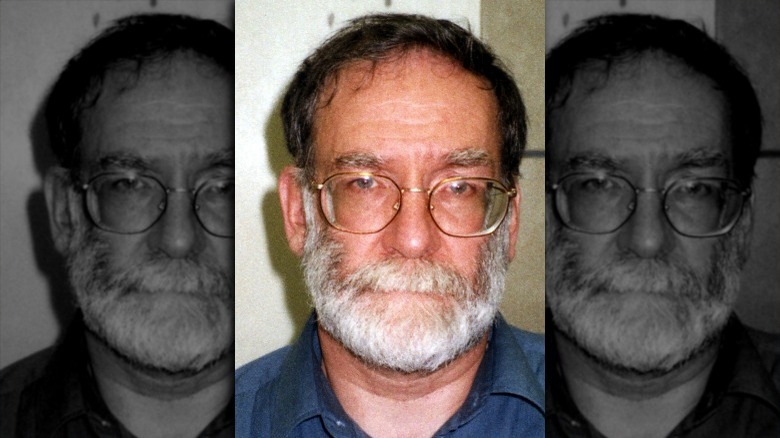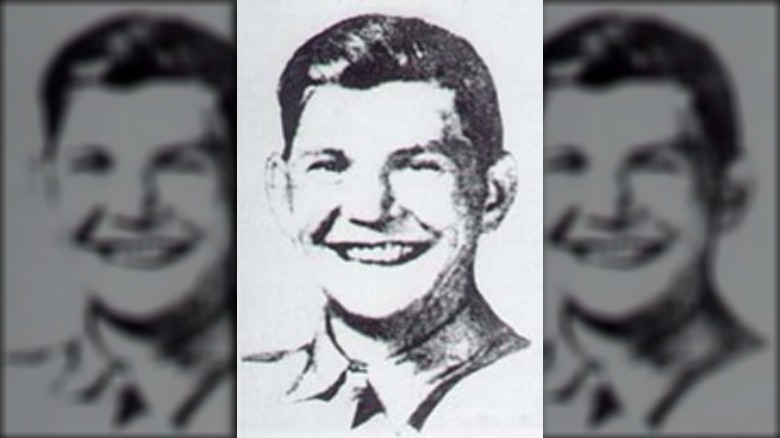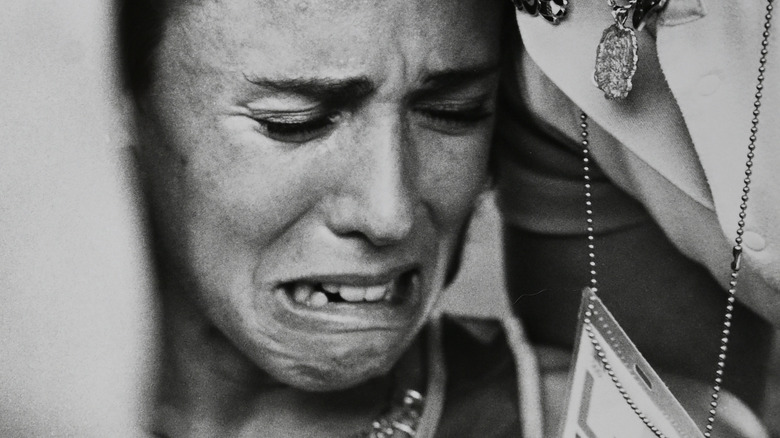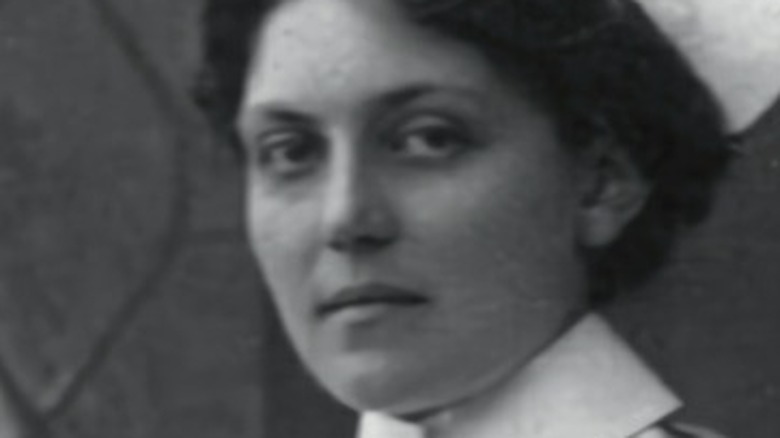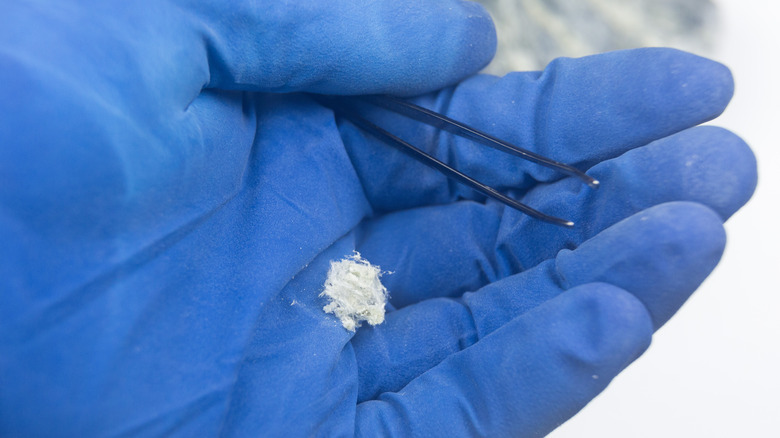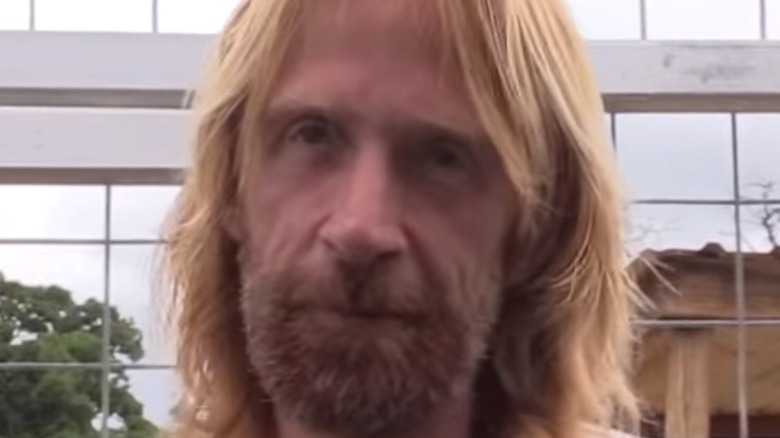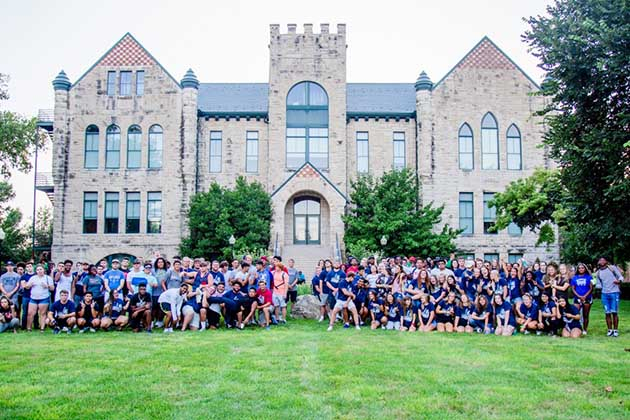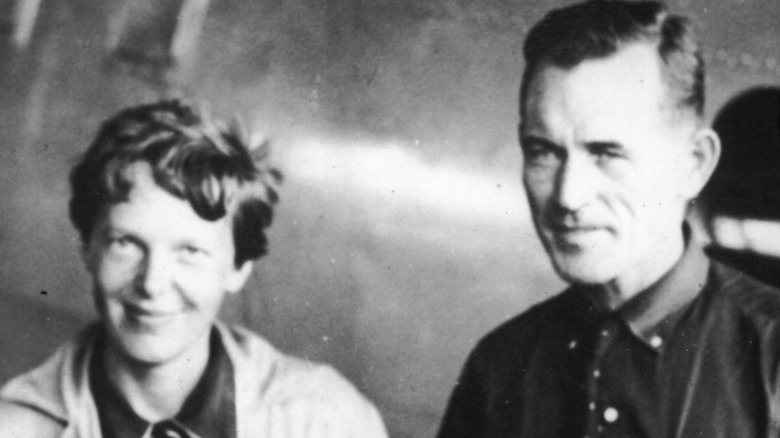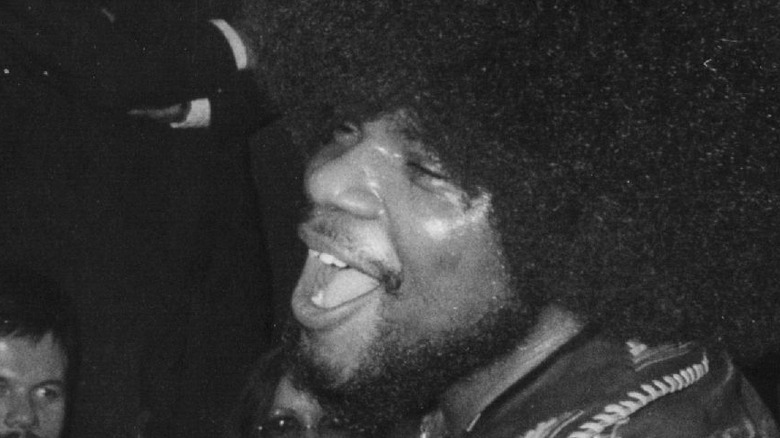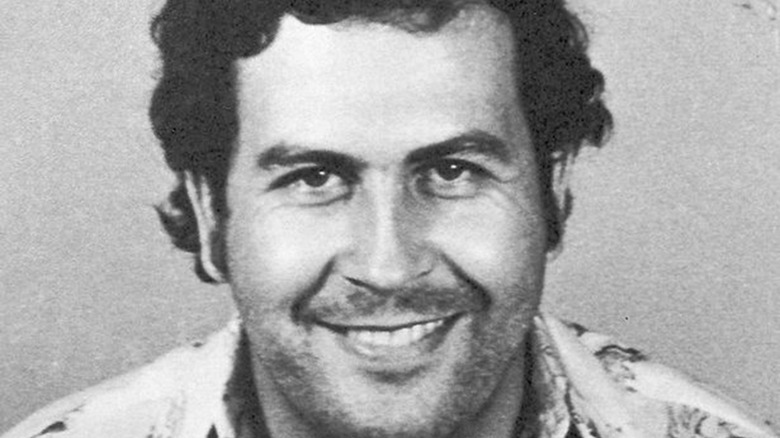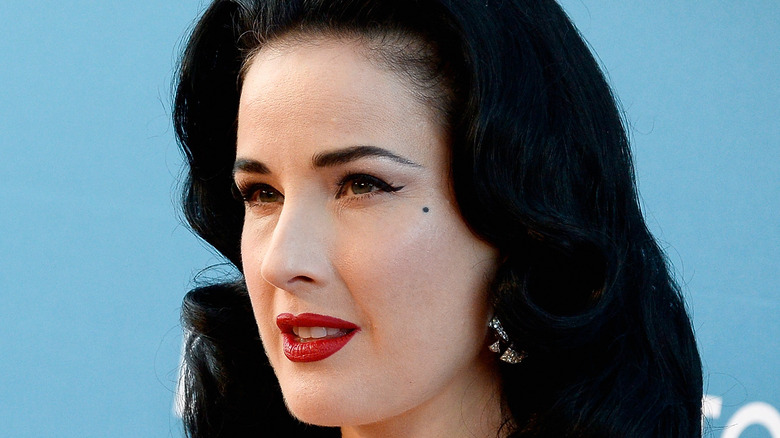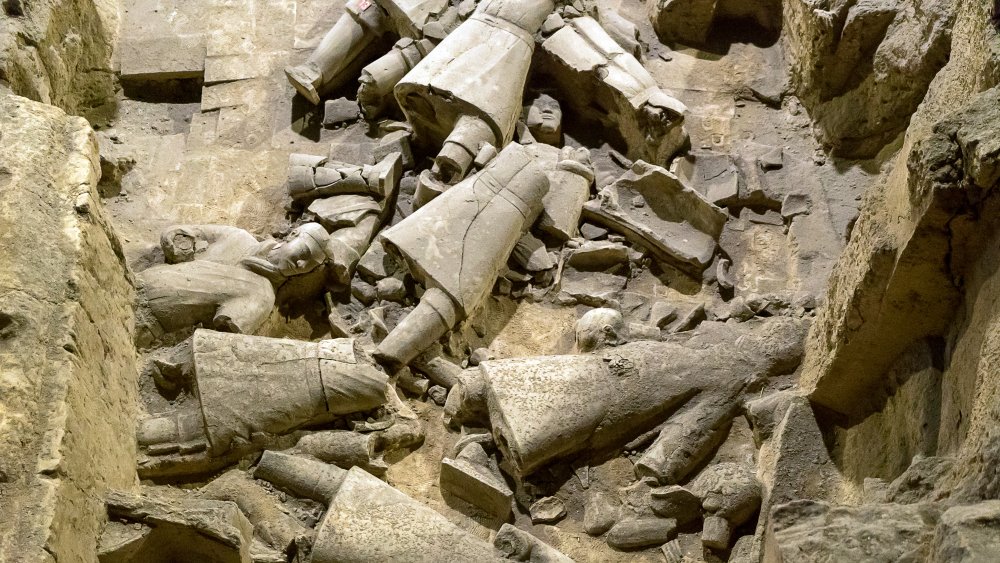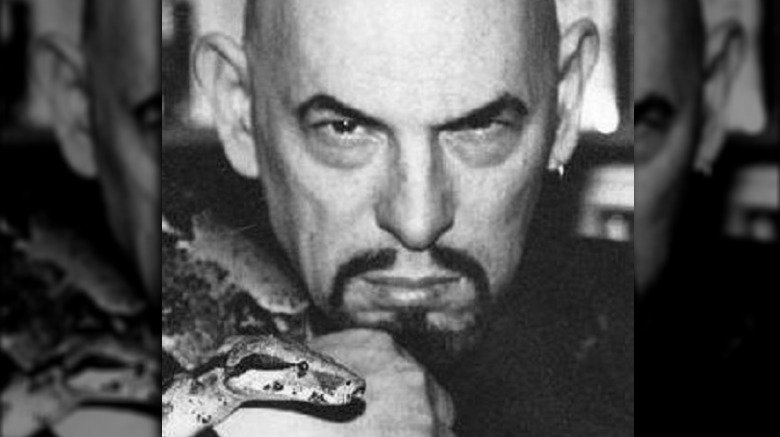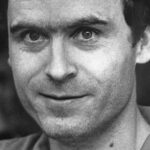
Here’s What Happened To The Bodies Of These Serial Killers
According to Psychology Today, a serial killer is one who is responsible for killing at least three people, over a time frame that spans more than a month, with down time in between. Many of the most famous killers went way over that threshold, and here’s the weirdest part: many have their own fan clubs.
New Statesman did a deep dive into the weird world where serial killers like Jeffrey Dahmer and Ted Bundy are pop culture icons, and criminologists suggest there’s a fascination with getting so close to danger — while, at the same time, knowing nothing is actually going to happen. Still, fans who claim things like “I feel a spiritual connection to Ted [Bundy] because I’ve been following him for such a long time,” are a little strange from the outside.
So, it’s not entirely surprising that when these infamous serial killers die, they’re often not buried in a typical cemetery. Knowing that they have honest-to-gosh fans out there makes it possible to see how gravesites might become places of pilgrimage, and so that brings up the question… what really happens to their remains?
Charles Manson's body was at the center of a major court battle
Charles Manson died on November 19, 2017, and there was a laundry list of people who wanted legal rights not just to his remains, but to his estate. It wasn’t until March of 2018 that a California judge decided Jason Freeman, Manson’s grandson, was going to get the whole shebang. Freeman told CNN, “This is unreal — this is something I actually played out in my mind ever since I was a kid,” and added that he was going to have his grandfather’s body cremated after a small ceremony.
According to The Independent, Manson was given a ceremony overseen by a pastor of the Church of the Nazarene, with about 20 people in attendance — including one-time Manson Family member Sandra Good. While Freeman had originally said his intentions were to scatter Manson’s ashes, some weird things have happened since.
In 2019, Rolling Stone reported that some of his ashes had been included in a set of masks made by the tattoo artist Ryan Almighty (who had once painted a portrait of Manson using human blood). Then, in 2021, Vice reported that when Freeman had spread Manson’s ashes, some of those ashes had been kept by a friend named Tony Miller, who then distributed them to others — including Ryan Almighty, who said he then used the ashes as part of a client’s “Helter Skelter” face tattoo.
No one wanted anything to do with Richard Ramirez
Even if a serial killer is found guilty and given the death penalty, that definitely doesn’t mean they’re going to be executed. Take the so-called Night Stalker, Richard Ramirez. He was killing in the mid-1980s, and in 1989, he was given the death penalty. Still, Women’s Health says he died before his execution could be carried out… and when he did die, the cause was B-cell lymphoma, and the year was 2013.
At the time, Ramirez was still married to a woman he had met after his conviction. Doreen Lioy completely believed in his innocence for a long time, and went on record as saying, “I think he’s a really great person. He’s my best friend, he’s my buddy. I just believe him completely.”
So, did she claim his body and give him a proper burial? Nope. After his death, Ramirez’s niece Shelly said (via Women’s Health) that his body went unclaimed for weeks. It wasn’t clear where Lioy was, but at the time of his death, he’d reportedly had no visitors for several years — quite a change from her previous four-times-a-week visitation schedule. San Quentin officials said that if he went unclaimed for long enough he would be cremated, and according to Find A Grave, that’s exactly what happened.
Ted Bundy's eerie final wishes
When it comes to history’s most notorious serial killers, Ted Bundy is nothing short of murderous royalty. Between 1974 and 1978 he killed more than 30 people, often using good looks and charm to lure good samaritans to their deaths. According to Men’s Health, his January 24, 1989 execution was the sort of event that everyone stopped, watched, and waited for news on. Bundy had actually gotten the death penalty for three separate trials, and still, he spent nine years in prison before someone actually flipped the switch on the electric chair at the Florida State Penitentiary, and when he was taken out of the prison, the crowds lining the streets outside cheered as the car bearing his body drove past. (They’d previously been cheering, “Burn, Bundy, burn!”)
Esquire says Bundy’s brain was examined for any physical explanations that might give researchers a clue just why he had been driven to kill so many people in such terrible ways, but his brain had none of the abnormalities or signs of trauma scientists expected to see.
Afterwards, Bundy’s very eerie final request was fulfilled: he was cremated, and his ashes were returned to Washington state, where they were scattered in the Cascade Mountains. Why is that eerie? That’s where he had disposed of (at least) four of the people he’d killed.
H.H. Holmes: The man in the murder castle
H.H. Holmes has the dubious honor of being known as one of America’s earliest serial killers, and when he was executed way back in 1896, it’s safe to say everyone who lived around his home — known as The Murder Castle — could sleep a little more soundly. Holmes was hanged in Philadelphia, and his final wishes were observed. Not wanting to — ironically — end up as a victim of local body snatchers and the ultimate subject of some nasty postmortem experiments, he requested a cement-covered coffin.
That did happen, but according to Rolling Stone, there were a ton of rumors that Holmes hadn’t died at all and instead, he’d escaped to live out the rest of his days in South America. It wasn’t as far-fetched as it sounded: this was the guy who, after all, had successfully renovated a Chicago apartment building to include things like soundproofed rooms, vats of acid, and pits full of quicklime — where he murdered somewhere around 200 people.
So, in 2017, Holmes’s great-grandchildren petitioned courts to have him exhumed to see — once and for all — if he was really buried where they claimed. Was he? Yes: while his body had decayed to the point where it was impossible to get DNA for testing, his teeth were still there. H.H. Holmes was reburied at Holy Cross Cemetery in Yeadon, Pennsylvania.
The weird afterlife of John Wayne Gacy's head
John Wayne Gacy — the serial killer that proves clowns are the worst — ultimately confessed to killing 33 people over the course of about six years in the mid-1970s. He was executed by lethal injection in 1994, and according to The New York Times, his body count made him the worst confirmed serial killer at the time.
What happened after his execution is partially up for debate. According to Find A Grave, Gacy was cremated. The “debated” part is whether or not his ashes were actually given to his sister, as is often claimed. That’s not the weirdest part, though.
In 2004, the Chicago Tribune reported that psychiatrist Helen Morrison had finally revealed that not only had she had Gacy’s brain stored safely in her basement for the previous decade, but that she also had preserved slices of his organs, too. Morrison had spent much of her career studying serial killers, and had been in touch with Gacy for the decade prior to his execution. He’d wanted her to have his brain, she said, so she had been there for his autopsy, then just simply took the brain with her when she left. It was perfectly normal, she reported, and she kept it in the hopes that new techniques would be developed to study it further.
The man finally identified as the Boston Strangler
In the 1960s, a single serial killer was linked to 11 victims across Massachusetts. He was nicknamed the Boston Strangler, but that’s a bit of a misnomer: victims were so far apart that five District Attorney’s offices were involved in the investigation. Still, it was never solved… at the time.
Fast forward a bit to the arrest of Albert DeSalvo. After his conviction for rape, he confessed that he actually was the Boston Strangler. While he did know a lot about the case, it wasn’t long before he first recanted his confession, then turned up dead — in 1973, in his jail cell, under circumstances that were never completely explained. The case kind of fell flat after that… until 2013.
That, says ABC News, is when police were able to match DNA evidence from the Strangler’s last victim to DeSalvo’s nephew, Tim. The match was close enough that law enforcement was able to get a court order to exhume DeSalvo’s body from where it had been buried in a Peabody, Massachusetts cemetery. Within days, USA Today confirmed that another DNA match had given law enforcement an “unprecedented level of certainty” that Albert DeSalvo had, in fact, been the Boston Strangler.
Jeffrey Dahmer was divided between his parents
Jeffrey Dahmer‘s parents have spoken out about what they felt about having a convicted serial killer for a son, and Dahmer’s father, Lionel, even wrote a book about it. Dahmer himself was killed in 1994, by an inmate who later said he’d pretty much done everyone a favor, because Dahmer was beyond creepy — and liked to sneak up on fellow inmates and remind them, “I bite.”
In the immediate aftermath of Dahmer’s jailhouse slaying, The Associated Press reported that he’d been taken for an autopsy, and his brain had been removed and preserved. The idea was that it was going to be studied by experts in abnormal behavior, but according to The New York Times, Dahmer’s parents were at odds over whether or not they wanted that to happen. About the same time, Dahmer’s body — which had been kept on ice until the trial of the man who killed him — was cremated, and his ashes were divided between his parents.
Dahmer’s mother, Joyce Flint, continued to petition to have her son’s brain studied to see if there were physical or biological reasons for his crimes. According to the Los Angeles Times, that wasn’t destined to happen: a judge ultimately ruled in favor of Dahmer’s father (who said he was hoping to keep with his son’s final wishes), and ordered his brain cremated as well.
Ian Brady and Myra Hindley's wishes were denied
Five children disappeared from the Great Manchester area between 1963 and 1965, and it was in 1965 that David Smith went to police and told them that he’d just witnessed his sister-in-law, Myra Hindley and her boyfriend, Ian Brady (pictured), killing a 17-year-old boy with an ax. In a highly publicized trial, the so-called Moors Murderers were both found guilty and sentenced to life in prison (via Biography).
Hindley died in 2002, and according to The Guardian, the cause was respiratory failure with suspected strokes and heart attacks. After becoming a devout Catholic, Hindley left final wishes that she was under no circumstances to become an organ donor, and that she was to be cremated and her ashes scattered secretly. That, says Cambridgeshire Live, happened. After a brief, private, and Catholic service, she was cremated and her ashes taken by a single police officer, who was sworn to secrecy and would dispose of the ashes in private.
As for Brady, he died in 2017 of heart failure and lung disease. Even though he had requested a formal funeral and the playing of Berlioz’s Symphonie Fantastique, The Guardian says that a judge ruled that there would be none of that happening — especially considering there were rumors he was going to be cremated and spread in the same place he’d buried the children he’d killed. Instead, he was cremated and his ashes were dumped somewhere “at sea.”
Ed Gein: Next to Mother
Ed Gein’s story has been told and retold so many times that he’s become the embodiment of the fictional characters — like Norman Bates — that he’s inspired, but when he died in 1984, he had been living peacefully and quietly at the Mendota Mental Health Institute for years.
His official cause of death was complications from cancer, and Gein was buried alongside his mother and brother (who he may or may not have killed) in their family plot at the Plainfield Cemetery in Plainfield, Wisconsin. It could be argued that was in questionable taste, considering it’s the same cemetery where Gein exhumed an unknown number of graves in order to find body parts for his infamous home furnishings.
Gein’s grave is unmarked, and according to Cult of Weird, that’s because his headstone was stolen in 2000. It wasn’t until the following year that it turned up in Seattle, as the centerpiece of a punk music and art show called the “Angry White Male Tour.” In spite of the fact that the tour organizer — and founder of the official Ed Gein Fan Club — insisted it was fake, it was quickly determined to be real. He later claimed he was “providing a service” to the stone, and it was never returned. Gein’s grave is still unmarked.
Aileen Wuornos returned to her best friend
Vice says that when Aileen Wuornos was executed by lethal injection in 2002, “She wanted it done.” That’s according to her best friend, Dawn Botkins.
Botkins and Wuornos grew up together in Michigan, and remained close throughout her trial and imprisonment. Botkins claimed to always have some sympathy for Wuornos, knowing the horrific abuse she suffered as they were growing up. That said, it’s still surprising that Botkins took charge of the serial killer’s remains, especially after agreeing, “Of course she should be executed. She killed seven men. I wouldn’t have it any other way.”
Originally, Wuornos had told Botkins, “When I die, put my ashes on Flagler’s Beach.” Botkins refused, saying that absolutely no one wanted her in Florida, much less on the beach. Instead, Botkins convinced her old childhood friend to agree to let her take her ashes home with her. There, she buried her, and a walnut tree marks the spot.
No one cared what happened to Albert Fish
Albert Fish‘s preferred victims were children, and it’s not clear just how many he killed and ate. He was convicted of the murder of 10-year-old Grace Budd, and when he was told he was going to be executed on January 16, 1936, he was pretty psyched about it. He described his immediate future in the electric chair as “the supreme thrill,” and by that time, those who knew him best had already washed their hands of him.
According to The New York Times, Estella Wilcox was Fish’s ex-wife. She’d perhaps unsurprisingly only been married to him for a few short weeks — from February 6 to April 2, 1930 — and said she really just didn’t care what happened to him.
And what happened to him is a little unclear. Fish was executed in Sing Sing, and according to Find A Grave, inmates who died at the prison and were never claimed tended to get buried at the cemetery on the grounds. However, they also say that in the 1940s, all the bodies that had been buried in the prison cemetery were moved. It’s unclear where Fish ended up, although he seems to have been buried in New York City, with at least one source putting his final gravesite in the Flushing Cemetery.
The fate of Dr. Death
While most doctors subscribe to at least doing no harm, Harold Shipman did exactly the opposite. When he went on trial in 1999, he was one of the world’s most prolific serial killers, ultimately charged with 15 murders and connected to around 250 suspicious deaths.
Shipman, says The Guardian, completed suicide in his jail cell in January 2004. It took more than a year for his body to be released to the family, and according to the BBC, his wife was advised to cremate him so his burial place wasn’t targeted by vandals. She did — with some difficulty. The Times says that at least one funeral home refused to provide services, and when he was cremated, it was done in the middle of the night.
Afterwards, it was reported that his ashes were scattered in secret — and that was only a minor footnote amid some serious outrage. Shipman’s wife received an upfront £100,000 from his insurance policy, and continues to get £10,000 a year afterwards… which was only part of the policy if he died before he hit 60-years-old. He was 58 when he took his own life.
Eddie Leonski was buried in a military cemetery… but not with honors
Eddie Leonski was a good-looking American GI who was sent to Australia during World War II… where he killed several women during power outages, and became known as the Brownout Strangler. After his capture — and a confession in which he said he strangled women to “get at their voices,” — he was court-martialed and was the recipient of a dubious honor: according to Executed Today, he’s the only foreign national to be tried and executed in Australia based on the laws of another country (his native US).
It was Douglas MacArthur himself who signed the execution orders, and Leonski reportedly went to the hangman’s noose pretty happily, singing “It’s a Lovely Day Tomorrow” as he went. Find A Grave says that even though he was cremated, he was buried three different times in about seven years: the first two were in Australia, and then he was moved to the Schofield Barracks Post Cemetery in Honolulu. If it seems odd that a serial killer executed for murder would get a military burial, there’s a footnote: the cemetery includes areas for not just POWs and soldiers, but “executed military criminals,” as well.

The Biggest Lars Mittank Theories: What Really Happened?

The Sad Truth About The Kiss Nightclub Fire
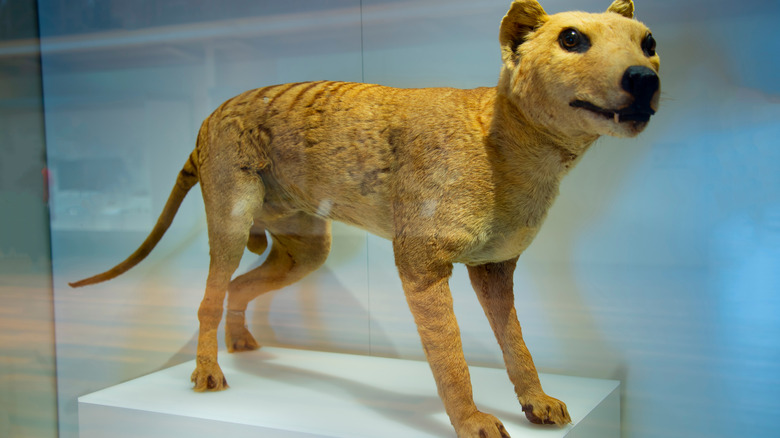
The Real Reason The Tasmanian Tiger Went Extinct

Inside The North Korean Prison Case Of Otto Warmbier
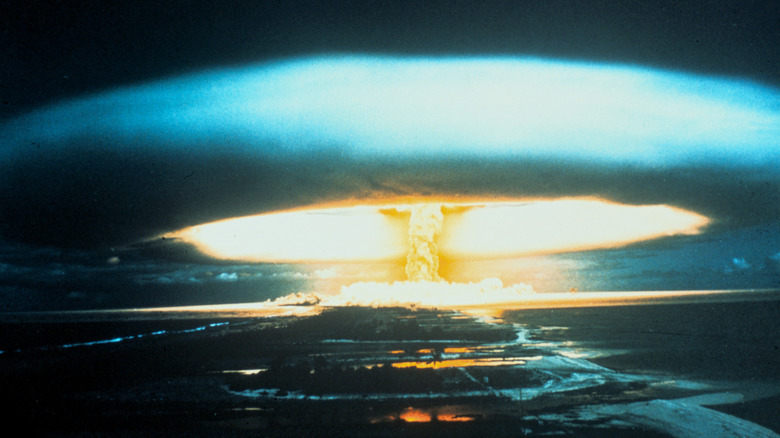
Most Dangerous Weapons In The World
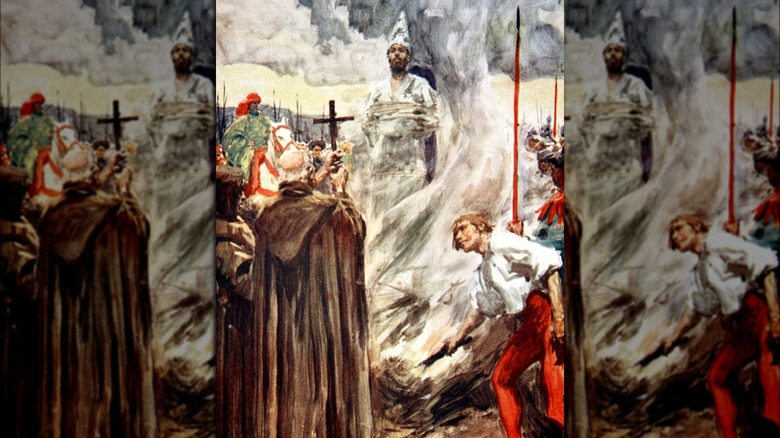
Messed Up Things That Happened During The Reformation

The Truth About The Atlanta 1996 Olympics Bombing
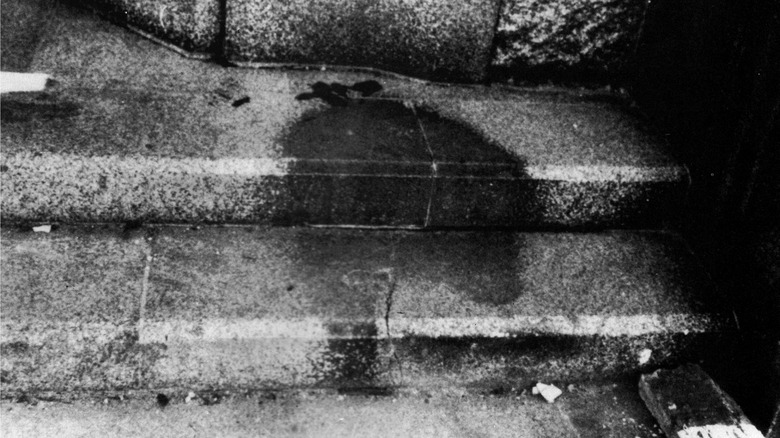
What Caused The Hiroshima Shadows?

The Bizarre Truth About The All-Beer Lent Diet

The World's Dumbest Inventions

